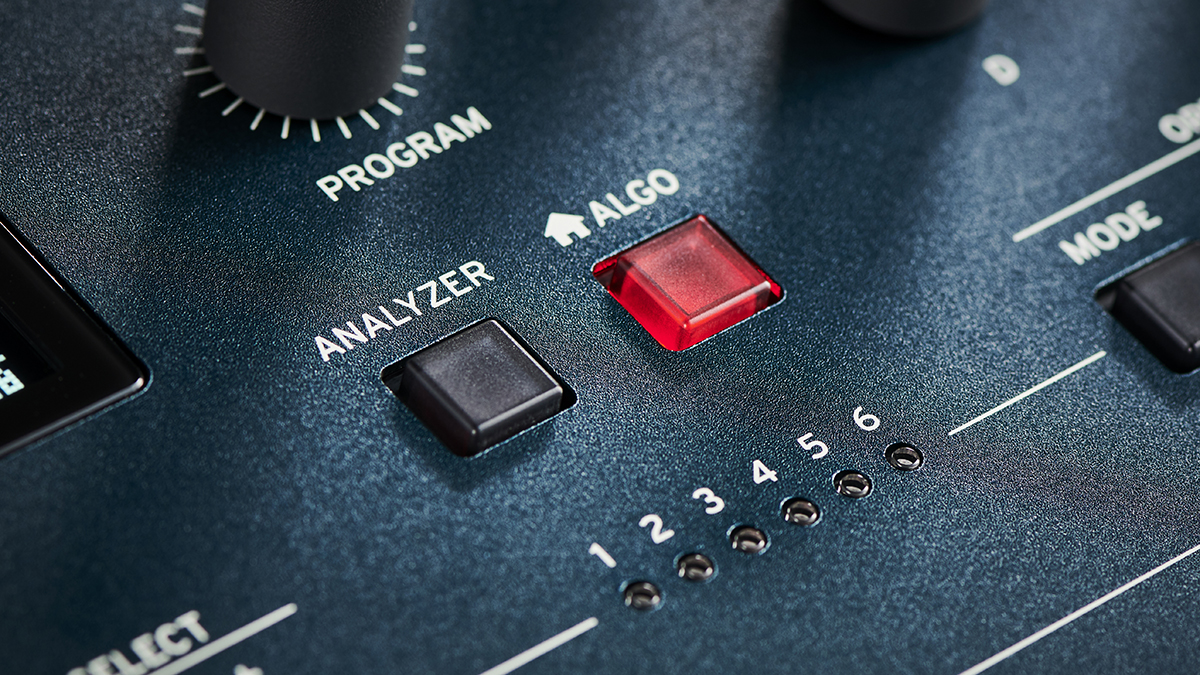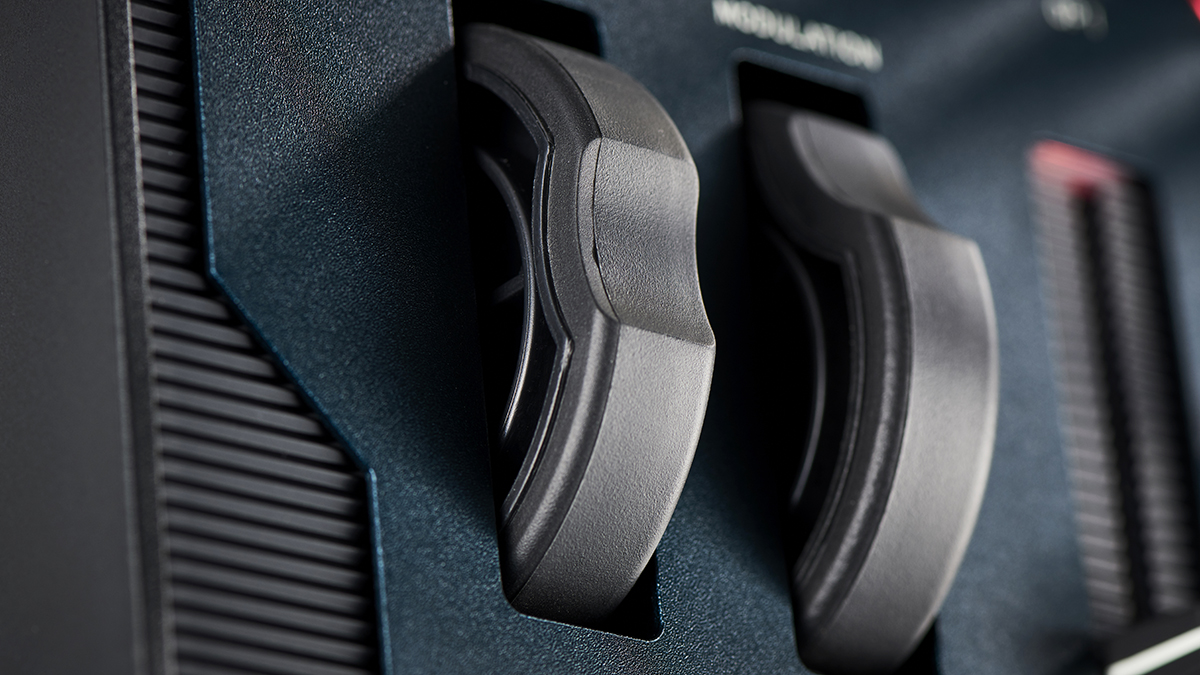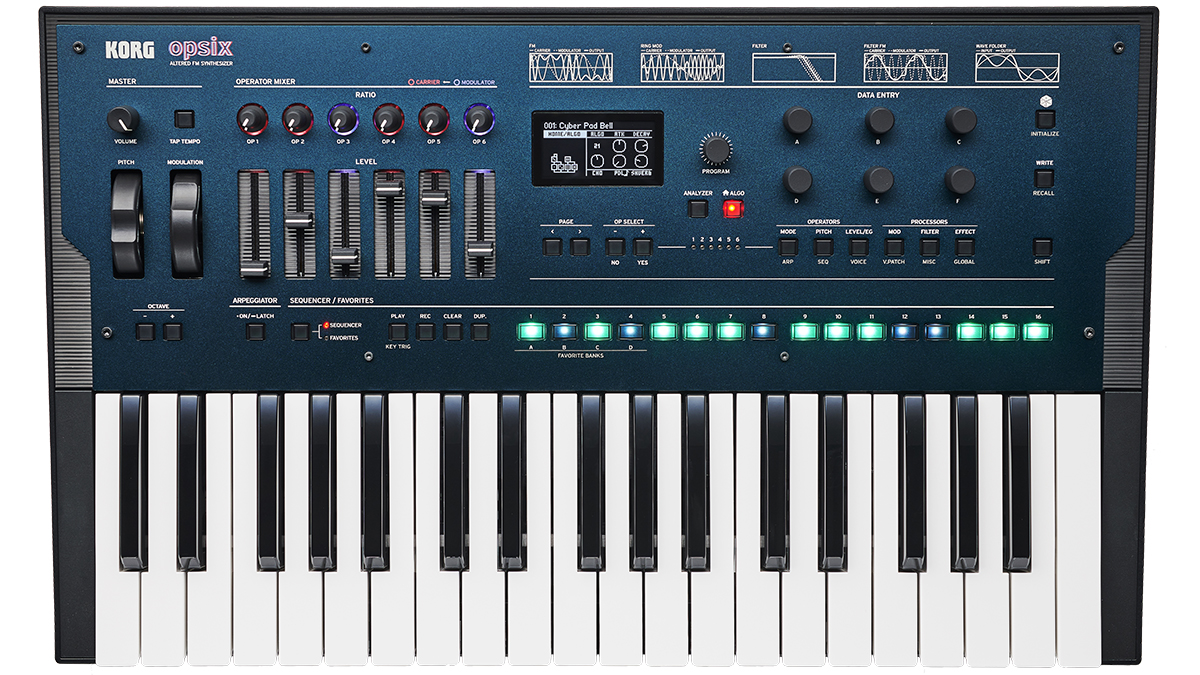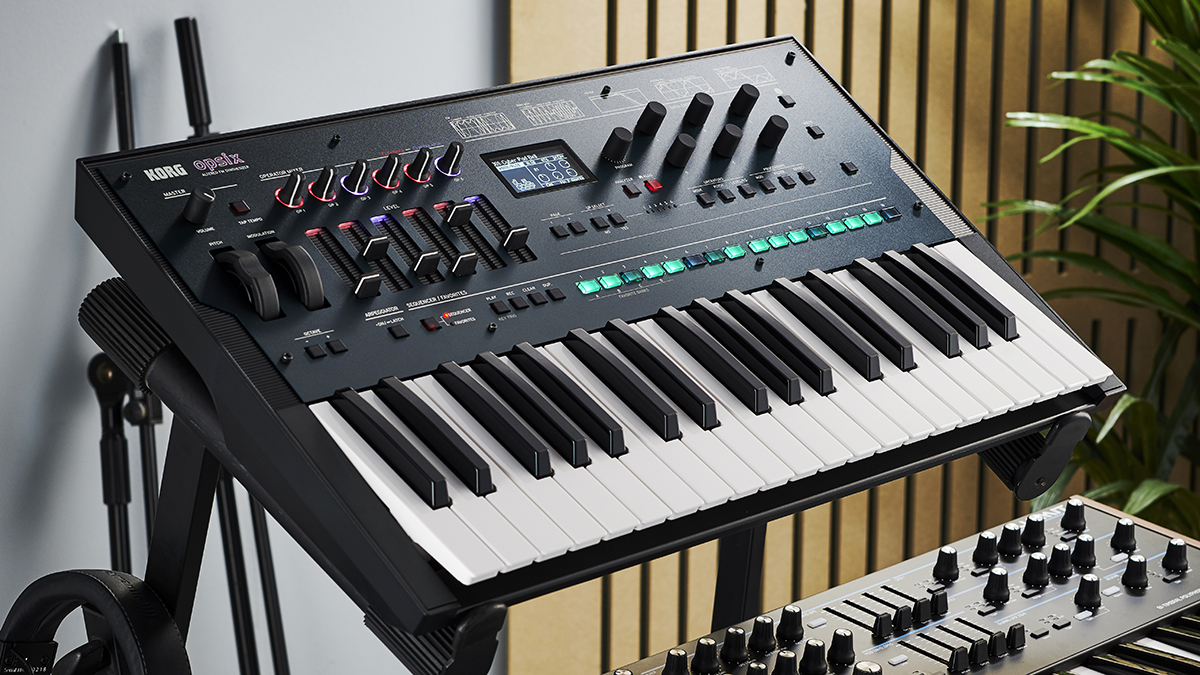MusicRadar Verdict
opsix is packed with unique character, and it’s fun and accessible in a way that’s rare for an FM instrument. Another top-class digital synth from Korg.
Pros
- +
An accessible and inspiring – yet still deep – take on FM synthesis.
- +
Operator modes add lots of unique character.
- +
Colour-coded operator controls significantly simplify programming.
Cons
- -
A few extra user-configurable controls would have been nice.
- -
Mono-timbral.
- -
No aftertouch from the keyboard.
MusicRadar's got your back
Korg kicked off 2020 by releasing one of the most impressive digital synths of recent years, the Wavestate – a modern take on the company’s classic Wavestation that perfectly balanced an element of nostalgia with modern depth and complexity.
While Wavestate took pride of place amongst the company’s showing at Winter NAMM 2020, Korg’s booth also featured a mysterious unlabelled and unplayable prototype; an ’80s-looking black keyboard that appeared to be a new FM synth named opsix.
What is it?
It turns out opsix was more than just a ‘concept synth’ and now Korg is rounding out 2020 with a full release. While this appears to be, broadly speaking, the same under-the-hood design as the instrument we got a glimpse of back at NAMM, the look has changed somewhat. Gone is the black, DX7-style chassis in favour of a design that matches the size and look of the Wavestate, albeit with the addition of a stylish green tint to the front panel.
The connection between opsix and Wavestate is more than just cosmetic though; the two instruments share a number of key features as well as a broad ethos, in that each presents itself as a modern update to a classic digital synthesis engine.
Here, that engine is labelled ‘altered FM synthesis’, which is perhaps a slight misnomer – rather than fundamentally altering how frequency modulation synthesis works, the opsix takes a classic FM synth engine and expands upon it significantly.
At its heart, the opsix is a six operator (hence the name) FM synth in the style of Yamaha’s iconic DX7. Each of these six operators is essentially a digital oscillator with its own ADSR amp envelope plus pitch and level controls.
Each operator can act either as a carrier – an oscillator that produces sound – or an audio-rate modulator routed to one of the other operators. The arrangement of these is dictated by an algorithm – essentially a diagram displaying the assignment and routing for the six operators.
Want all the hottest music and gear news, reviews, deals, features and more, direct to your inbox? Sign up here.
The opsix expands on the DX7 format in several significant ways though. For one thing, there’s an increased number of algorithms, 40 compared to the DX7’s 32, plus an interesting user algorithm mode whereby users can assign their own operator routing and modulation depth within the synth itself. Doing this can be a little fiddly, but it’s a cool feature to have onboard and works great with the randomiser tool (see boxout).

Additionally, whereas classic DX7-style FM uses simple sine waves for each operator, opsix offers a range of 21 shapes including classic virtual analogue waves with 12-bit, 8-bit and HD variations, several additive waves and two noise sources. While opsix is hardly the first synth to do this – plugins such as Ableton Operator go further with additive wave editors – it still expands the sonic scope considerably.
The highlight here though is opsix’s range of operator modes that alter the relationship between carrier and modulator, and go well beyond the standard pitch modulation of straightforward FM synths. There are five varieties here: standard FM, Ring Mod, Filter, Filter FM and Wavefolder.
As with classic FM synths, in standard FM mode, the modulators are used to vary the pitch of the carrier operators. Ring Mod, on the other hand, works by multiplying the carrier and modulator signals to produce a new frequency, creating results that are often weirder and more metallic than FM.

Filter and Filter FM modes both work by feeding the carrier signal into its own resonant multimode filter before hitting the output stage. In standard Filter mode both the carrier and modulators are fed into the filter together, allowing users to create sounds more akin to a straightforward virtual analogue synth.
In Filter FM mode, any modulators are used to rapidly modulate the cutoff frequency, which can result in fantastically gritty, distortion-like tones and even formant-style effects depending on the ratio of the modulator.
Finally, the Wavefolder works by folding the oscillator wave back in on itself after it reaches a certain threshold (anyone that’s tried the Metalizer on Arturia synths will be familiar with the effect). Here modulator and carrier signals are mixed together. The effect is generally in a similar ballpark to that of Ring Modulation, albeit often harsher and grittier. These latter qualities can be adjusted using Gain and Bias controls.

Performance and verdict
What makes the opsix a real winner, however, is that these modes can be mixed and matched within a single patch. This means it's possible to, for example, use two oscillators as a virtual analogue sub underpinning a four operator FM setup or blend FM, Ring Mod and Wavefolding to create dense ambient patches with a lot of complex harmonics.
Beyond the operators, opsix features global filter and effect sections and a modulation matrix. As with the Wavestate, opsix offers a range of resonant filter models including emulations of both the MS-20 and Polysix. It creates a nice range of tonal variety, and the same selection is available to the Filter/Filter FM modes at the operator stage.
Each effect slot can be filled with one of 30 digital processors ranging from EQs and enhancers through compressors, limiters, multiple delay and reverb types, distortion and an amp sim.

Global modulation, meanwhile, is provided by three ADSR envelopes and three LFOs, each of which can be assigned to a broad range of destinations via the 12-slot patchbay. Destinations include modulation of individual operator parameters, global filters and effects, or cross-modulation of other modulators.
Each modulation routing can also be assigned a secondary control source for adjusting the depth via inputs such as the mod wheel, a control pedal, velocity, key tracking or another internal modulator.
Compared to subtractive synthesis, FM is an inherently complicated process and can be considerably more fiddly to program. Classic hardware FM synths always struggled with this – Yamaha’s DX range was notoriously time-consuming to program, and many users ended up using them largely as preset machines as a result.
Recent times have seen vast improvements; in the plugin realm, the likes of FM8 make the process easier by giving access to all parameters in a more open, multi-window interface, whilst recent hardware such as Elektron’s Digitone and Yamaha’s Montage have succeeded in making FM synthesis feel far more hands-on and expressive.

opsix is probably the most pleasingly-accessible hardware take on FM synthesis we’ve seen to date though. The user interface is, relatively speaking, fairly clean and easy to navigate. To the left side is a bank of six faders and rotaries used to control each operator.
The faders are used to set the operator level, while the rotary adjusts the ratio (ie. coarse tuning). With a shift press, however, the faders can be used to alter the oscillator wave shape and the rotaries to change the operator mode.
In a particularly smart move, these controls are backlit, and use variations in colour to identify how each operator is set up. The opsix uses different colours to mark carrier and modulator assignments as well as, when shift is pressed, which mode is being used for each operator.
To the right side of the interface are six data entry rotaries that are used to control the remaining parameters, making use of various menus selected by a row of buttons underneath. While this does mean that quite a few different elements share the one bank of controls – from individual operator envelopes through to modulation tools, filters and effects – it’s generally easy to navigate and it rarely feels like parameters are buried too deep within the menus.

That being said, we do feel like the opsix could have really benefited from having a couple of user-assignable macro controls. The UI does have a home screen, which gives quick access to several top level parameters such as the algorithm, global attack and decay, and levels for each effect.
There are also several assignable control sources such as the mod wheel, keyboard velocity or pedal input. An additional rotary or two would have allowed for an extra layer of expression though, which would allow users to tweak parameters configured to suit each individual patch.
In terms of other potential negatives, it might disappoint some users that, like the Wavestate, opsix’s 37-note keyboard will register velocity and release velocity but not aftertouch. The synth is also mono timbral, which is hardly unusual for an instrument at this price point, but does put it in contrast to its sister instrument Wavestate, with its multi-sound layers and splits, or its closest competitor Digitone, which offers four simultaneous FM engines.
- The 18 best synthesizers 2020
- The 11 best semi-modular synths 2020
- The 16 best Eurorack modules 2020
opsix’s voice count is lower than that of the Wavestate too, at 32 rather than 64 voices. It does offer a unison mode though, which is fantastic for creating thick and powerful digital sounds capable of filling the full frequency spectrum.
In all, opsix doesn’t quite have the frankly jaw-dropping depth and complexity of Wavestate, but that doesn’t detract from the fact that this is still one of the finest digital synths going. Rarely has a hardware FM instrument felt this fun and intuitive to program, and the ability to mix-and-match operator modes lends opsix a genuinely unique sonic character. Another resounding success for Korg.
MusicRadar verdict: opsix is packed with unique character, and it’s fun and accessible in a way that’s rare for an FM instrument. Another top-class digital synth from Korg.
Hands-on videos
Loopop
Bobeats
Korg
Specifications

- Altered FM sound generator
- 37 keys (velocity and release-velocity sensitive)
- 32 voices (or a max. of 24 voices, depending on the settings)
- 6 operators, 1 filter, 3 EGs, 3 LFOs, 3 effects, step sequencer, arpeggiator
- 40 presets + user algorithm (unique to each program)
- 5 modes (FM, Ring Mod., Filter, Filter FM, Wave Folder)
- 21 oscillator waveforms
- 11 filter types
- ADSR envelope
- 23 LFO waveforms
- 30 effects types

I'm the Managing Editor of Music Technology at MusicRadar and former Editor-in-Chief of Future Music, Computer Music and Electronic Musician. I've been messing around with music tech in various forms for over two decades. I've also spent the last 10 years forgetting how to play guitar. Find me in the chillout room at raves complaining that it's past my bedtime.
